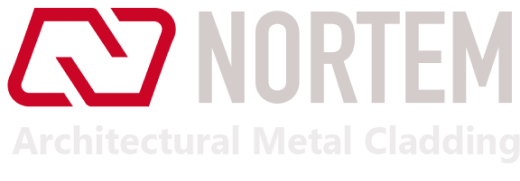Exterior cladding has become an essential architectural element for both commercial and residential properties. Rather than relying solely on paint to enhance a building’s exterior, architects, contractors, and homeowners are turning to modern cladding materials to improve both the aesthetics and functionality of their structures.
Whether you’re tackling your first renovation or embarking on a new construction project, choosing the right exterior cladding can be overwhelming. With so many materials available — from wood and vinyl to ceramic and metal composite panels (commonly known as ACM panels) — selecting the right option for your project requires careful consideration.
If you’re leaning toward the sleek, contemporary look of exterior panels, you’re probably wondering: How do ACM panels compare to wood, vinyl, and other materials — especially when it comes to cost and performance? Let’s break it down.
Cost Comparison: ACM Panels vs. Wood, Vinyl, and Other Cladding Materials
Price is often one of the first factors to consider when choosing exterior cladding. Traditional materials like wood, vinyl, and brick generally range from $3 to $14 per square foot, with high-end wood options landing at the higher end of that spectrum.
In contrast, ACM panels typically cost between $15 and $35 per square foot — a higher upfront investment. So, are ACM panels worth the extra cost? Let’s explore why they stand out.
Superior Durability: Why ACM Panels Last Longer
One of the biggest advantages of Aluminum Composite Panels (ACM) is their exceptional durability. These panels are manufactured using two thin sheets of aluminum bonded to a thermally resistant polyurethane core, creating a lightweight yet incredibly strong structure.
This innovative construction allows ACM panels to withstand harsh weather conditions, heavy impacts, and environmental stressors better than most other cladding options. Many ACM panels also come with additional protective coatings that provide enhanced resistance to water damage, dents, and UV exposure.
In fact, ACM panel systems undergo rigorous factory testing to ensure they meet performance standards in areas like:
- Wind resistance
- Structural stability during earthquakes
- Waterproofing against rain and snow
- Air infiltration prevention
- Fire resistance (when using fire-rated cores)
- Moisture and mold resistance
With best-in-class durability, ACM panels outperform traditional materials like wood or vinyl, making them one of the most reliable and long-lasting exterior cladding options available.
Unmatched Design Flexibility
While materials like wood, stone, and vinyl offer unique aesthetic appeal, they often come with design limitations.
- Wood panels have a natural charm but are typically confined to their organic appearance, which can be altered with paint — although this often detracts from their original beauty.
- Stone cladding provides a rustic look, but shaping stone into custom designs is challenging and costly.
- Vinyl siding offers more flexibility but lacks the premium feel of modern materials.
ACM panels, on the other hand, are incredibly versatile. Their lightweight and flexible structure allows them to be fabricated into virtually any shape — from simple rectangles to complex curves and circular designs.
Additionally, ACM panels are available in an extensive range of colors and finishes, including:
- Matte and gloss finishes
- Metallic and woodgrain textures
- Custom color matching to suit any architectural style
This unparalleled design flexibility makes ACM cladding the ideal choice for architects looking to create eye-catching, contemporary building facades.
Low Maintenance: Save Time and Money with ACM Panels
Another major advantage of ACM panels is their minimal maintenance requirements — especially compared to natural wood or stone cladding.
- Wood siding requires regular sealing, staining, or painting to prevent water damage, rot, and pest infestations.
- Stone cladding can accumulate dirt and grime, requiring periodic cleaning and repairs.
In contrast, ACM panels only need occasional cleaning — usually a quick rinse and wipe to maintain their pristine appearance. Their smooth, non-porous surfaces resist dirt buildup, while their UV-resistant coatings help preserve their color and finish for decades.
For property owners and facility managers, this translates to significant long-term savings on maintenance and repairs.
The Bottom Line: Are ACM Panels Worth It?
While the initial cost of ACM panels is higher than wood, vinyl, or brick, their unparalleled durability, design flexibility, and low maintenance requirements make them a smarter investment for the long run.
Whether you’re building a sleek modern office, a cutting-edge retail space, or a contemporary residential home, ACM panels deliver the perfect blend of aesthetics, performance, and longevity — making them one of the top choices for exterior cladding in 2025 and beyond.

